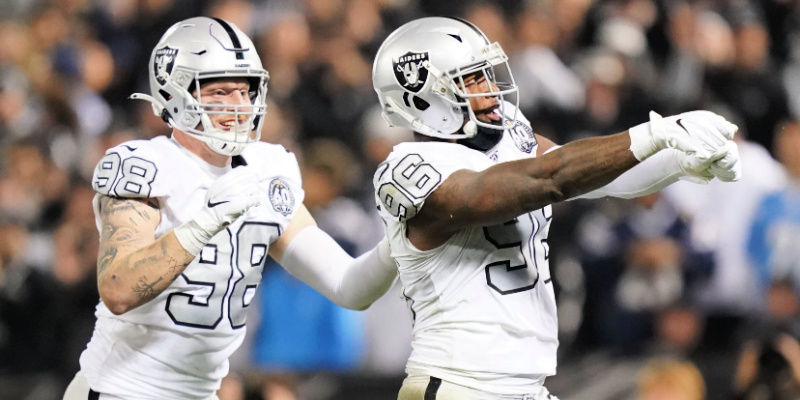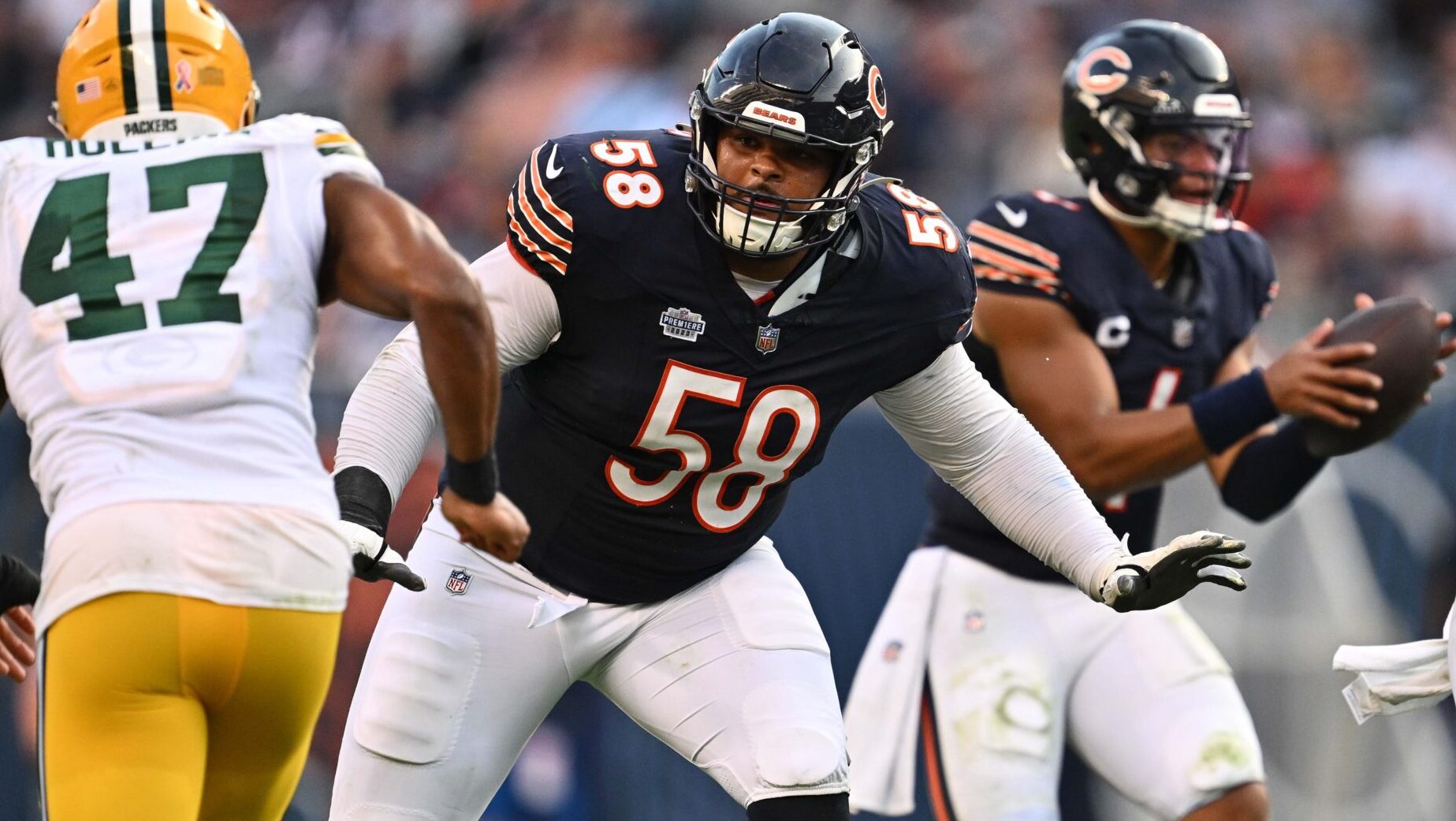Analysis
5/25/22
8 min read
Does Double Dipping in the Draft Pay Off?

Take yourself back to the 2012 NFL Draft. It had been nearly three months since Eli Manning and the New York Giants knocked off (for the second time) Tom Brady and the New England Patriots in Super Bowl XLVI thanks to Mario Manningham’s impressive sideline footwork. Meanwhile, debates ensued about who the AP Offensive Rookie of the Year should be, with second overall pick Robert Griffin III beating out first overall pick Andrew Luck for the honor.
Washington had also picked another quarterback three rounds later in 2012 after drafting Griffin III: Kirk Cousins out of Michigan State. Viewed as an insurance policy, potentially high-end back up and hedge against potential injuries to Griffin III, Cousins was named the starter over Griffin in 2015 and has since started all but two games over the past seven seasons.
Double-dipping in the draft is a strategy teams employ for a variety of reasons, whether it is to increase their chances of finding a capable starter at a position of need, as a hedge against potential injury or lack of production, or because the value is simply too good to pass up. Recent examples of this phenomenon working out in favor of the player selected later are listed below:
| Team | Year | Player Drafted First | Round (Pick) | Player Drafted Second | Round (Pick) |
| Baltimore Ravens | 2015 | Maxx Williams | 2 (55) | Darren Waller | 6 (204) |
| Baltimore Ravens | 2016 | Bronson Kafusi | 3 (70) | Matthew Judon | 5 (146) |
| Green Bay Packers | 2017 | Jamaal Williams | 4 (134) | Aaron Jones | 5 (182) |
| Oakland Raiders | 2019 | Clelin Ferrell | 1 (4) | Maxx Crosby | 4 (106) |
There are multiple instances of teams fortifying positions with multiple selections in the 2022 NFL Draft, and below are four instances in which the player selected later has a shot to outperform the earlier pick from Day 1 or 2.
Cincinnati Bengals: S Daxton Hill (1st Round) vs. S Tycen Anderson (5th Round)
The defending AFC Champions added early and often to their secondary, drafting Hill, Anderson, as well as Nebraska cornerback Cam Taylor-Britt in the second round. Cincinnati has said that they plan to use the versatile Hill all over their defensive backfield – in three safety sets alongside Jessie Bates III and Vonn Bell, as a nickel cornerback, and even potentially at outside cornerback.
Hill was The 33rd Team’s sixth-ranked safety pre-draft and projects as a starting-caliber nickel safety. However, his limited play strength and lack of muscle on his frame could be a detriment if used to match up against bigger tight ends. Hill demonstrated solid capabilities in man and zone coverage but struggled against twitchy, quick receivers which could be an issue in the slot.
Anderson was The 33rd Team’s 12th-ranked safety and will immediately compete for a nickel role with an extremely high ceiling. His rare traits are evident in his 9.49 Relative Athletic Score (compared to 9.04 for Hill) and most notably, Anderson has much better size and is more explosive. He showed good coverage skills, but his footwork will need a fair amount of work and will limit his ability to step in as a pure free safety from Day 1. However, with an elite frame and similar explosiveness to Hill, it would not be a surprise for Anderson’s trajectory to put him in a position to be a better player than Hill in a couple of seasons.
Dallas Cowboys: OT Tyler Smith (1st Round) vs. OT Matt Waletzko (5th Round)
After being such a fearsome unit for years, the Dallas offensive line has begun to slip from the standard they had set as injuries and free agency led to attrition. After losing Connor Williams in free agency and releasing La’el Collins, America’s Team added reinforcements in the draft.
Smith was The 33rd Team’s eighth-ranked offensive tackle and a player that likely got pushed up boards due to a dearth of competent offensive linemen in the league. He has an attractive frame for an offensive tackle, at 6’4” and around 325 lbs., and was a three-year starter in college despite being one of the youngest players in the draft. However, his fundamentals are completely lacking, with his anchor while pass-blocking and technique at the point of attack while run-blocking both needing to be overhauled.
As the 17th-ranked offensive tackle on our board, Waletzko has a lower ceiling than Smith but a floor that is significantly higher. His frame does need to be filled out more, and he is not the most explosive or nimble offensive tackle. However, his technique
There is a world in which Smith is able to greatly improve his technique and bring it up to par with his frame, resulting in an offensive tackle that is absolutely worth the 24th overall pick in the draft. It feels just as likely that Waletzko is able to carve out a substantial career in the league while the opposite happens for Smith – not exactly a ringing endorsement for a first-round tackle.
Green Bay Packers: WR Christian Watson (2nd Round) vs. WR Romeo Doubs (4th Round) vs. WR Samori Toure (7th Round)
An already thin receiver room was decimated this offseason as the trade of Davante Adams and departure of Marquez Valdes-Scantling in free agency means that the Packers have nearly 40% of their targets from 2021 to replace. Watson is Green Bay’s highest-drafted receiver since 2002 and saw his draft stock steadily climb since his Senior Bowl performance.
Ranked as the seventh wide receiver by The 33rd Team, he is a large (6’4”, 208 lbs.) wideout who has great speed and impressive measurables. Watson was a great deep threat in the FCS while at North Dakota State and is a large target. However, he remains unpolished as a route runner, lacks the ability to consistently high point the ball despite his height, and shows overall average ball skills.
Doubs was extremely productive his last two seasons at Nevada, a stark contrast to Watson’s stats in a run-oriented offense at NDSU. The 13th-ranked receiver on our board, he has a smaller frame than Watson but has good speed and great acceleration that allows him to be a vertical threat. Doubs showed the ability to get off press coverage and his releases are strong though he does need to improve his route running. He is also a much better threat running after the catch than Watson is and proved he is a versatile piece on offense. Toure is an intriguing prospect who broke records at Montana and was productive at Nebraska in 2021; he is a slender receiver who is made for the slot but lacks notable physical traits.
The presence of Aaron Rodgers presents a wild card for the success of any rookie wide receiver in Green Bay so it remains to be seen what type of relationship Watson and Doubs will be able to develop. While Watson is more physically talented than Doubs is, the latter’s penchant for productivity and ability to get open gives him a great shot to be one of the most productive rookie wide receivers.
Pittsburgh Steelers: WR George Pickens (2nd Round) vs. WR Calvin Austin III (4th Round)
The Pittsburgh Steelers have developed a well-earned reputation for being a wide receiver factory over the past few seasons and added two new faces to their wideout room. In a loaded draft class, Pickens was the 11th wide receiver off the board and was tenth in The 33rd Team’s rankings.
Suffering a torn ACL last spring, Pickens played in just four games for Georgia in 2021 and recorded minimal production. He has solid speed and great height, demonstrating the ability to leverage this and make contested catches. However, he will need to improve his route-running and play strength in order to improve separation and not get rerouted by NFL cornerbacks. There were also rumors during the pre-draft process about personality and maturity concerns with Pickens, though the Steelers have stated that they share no such concerns.
Austin III is a completely different player than Pickens, and any path to success in the NFL is solely reliant on one trait – his speed. At 5’8” and 170 lbs., his 4.32 track speed is his calling card and his ability to change gears and accelerate away from defensive backs is special. Given his size, the 18th-ranked wide receiver on The 33rd Team’s board certainly has to elevate his ability to avoid being jammed at the line and durability may be a concern.
However, his speed is a better singular trait than anything Pickens possesses, and the rest of his wide receiver toolbox has enough promise that it is not hard to imagine Austin III finding immense success within his role in the league. Much of his success will depend on how offensive coordinator Matt Canada is able to deploy him and leverage his speed to create mismatches and opportunities against defenses.








